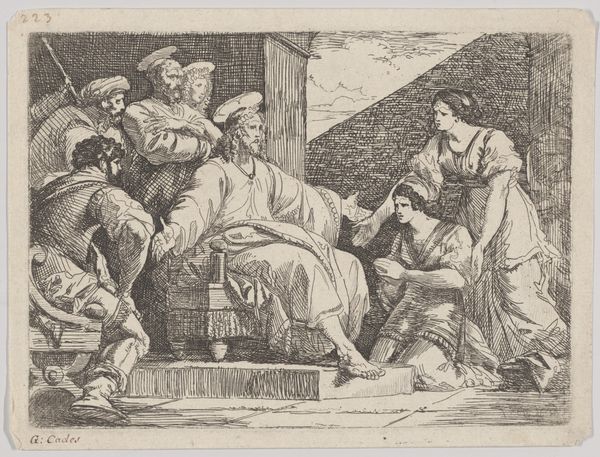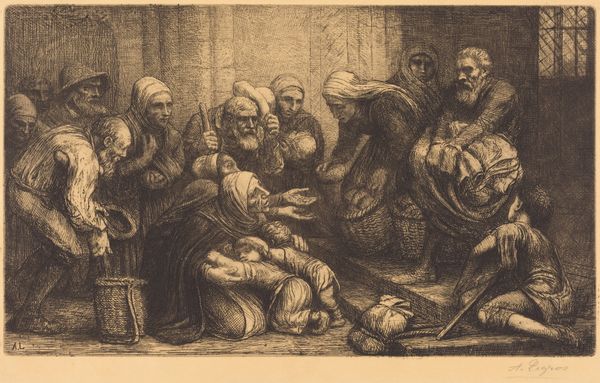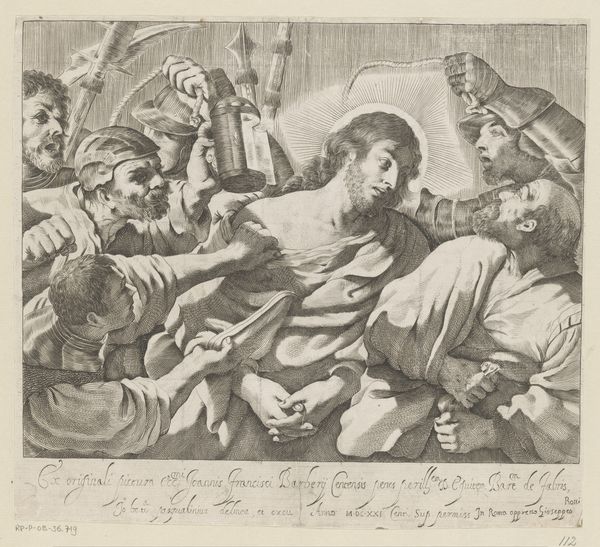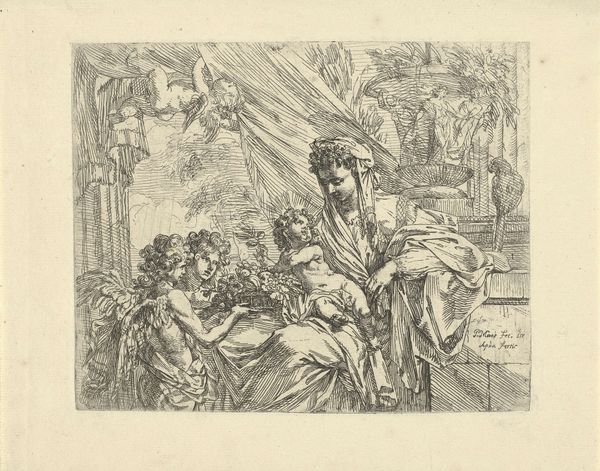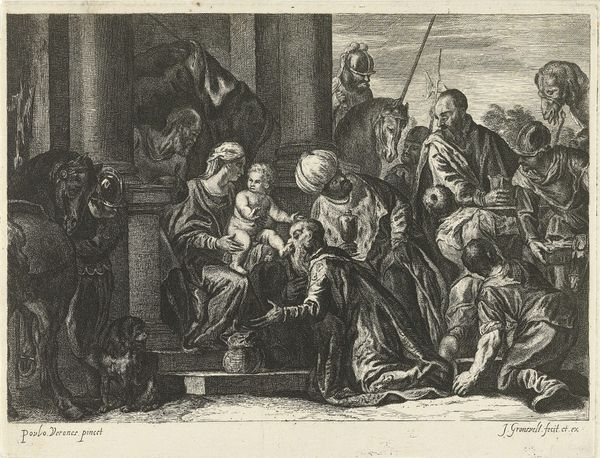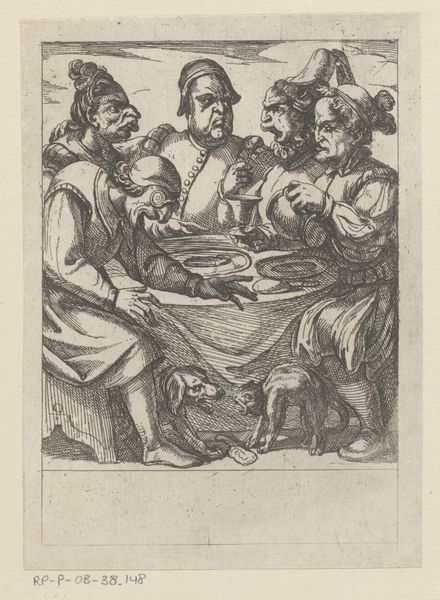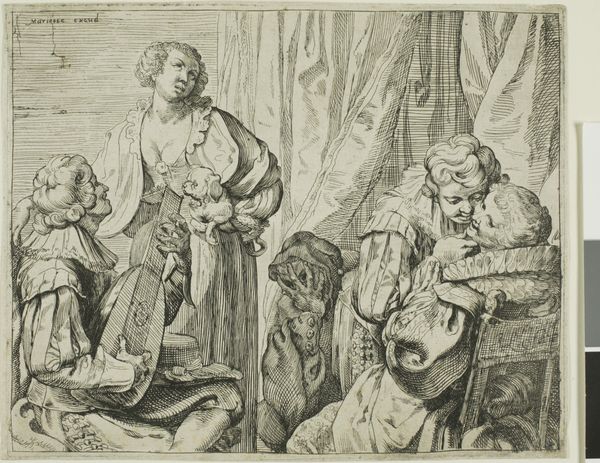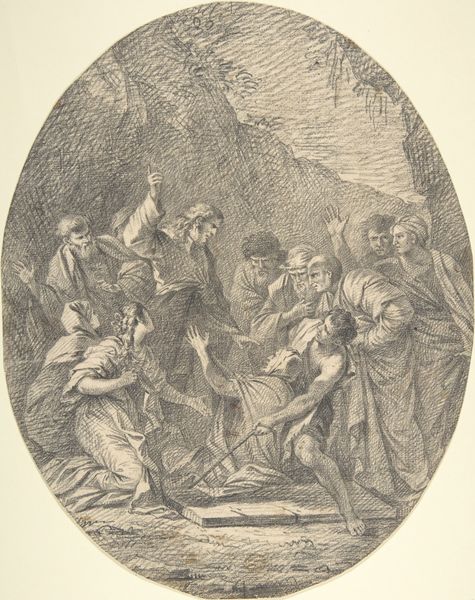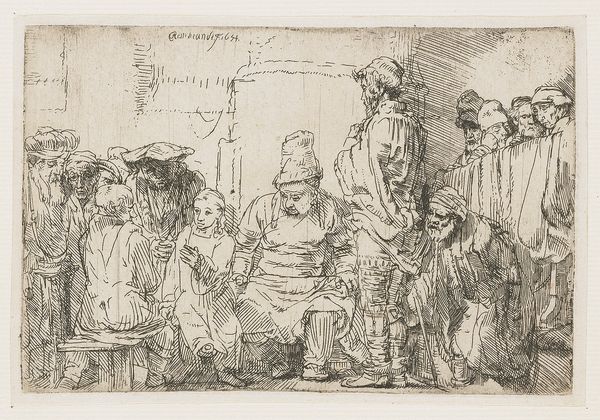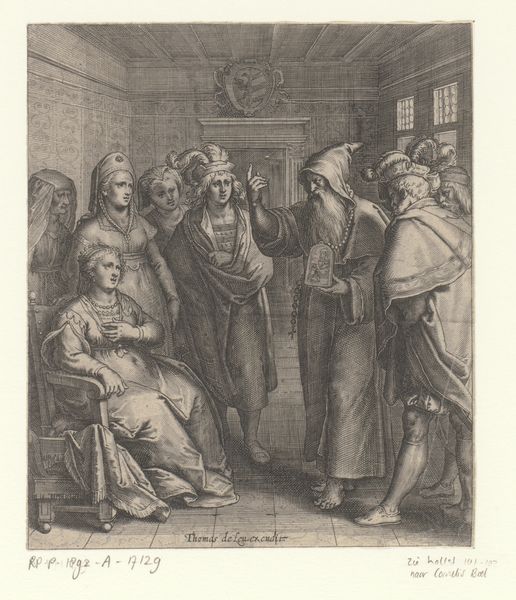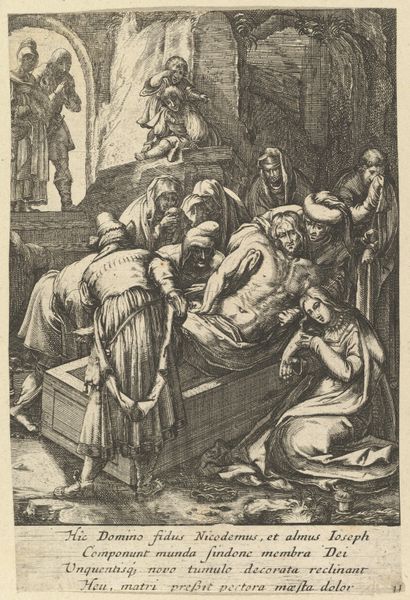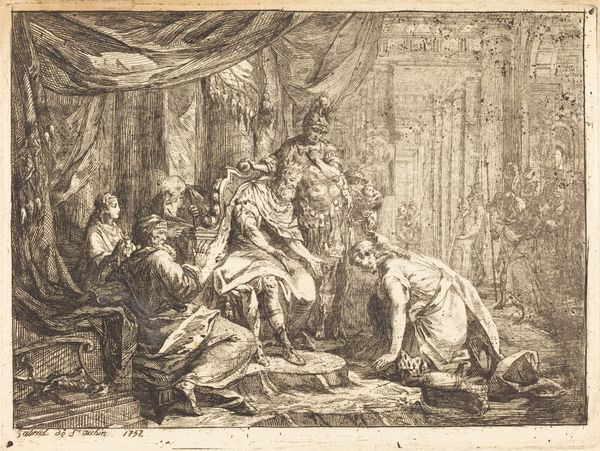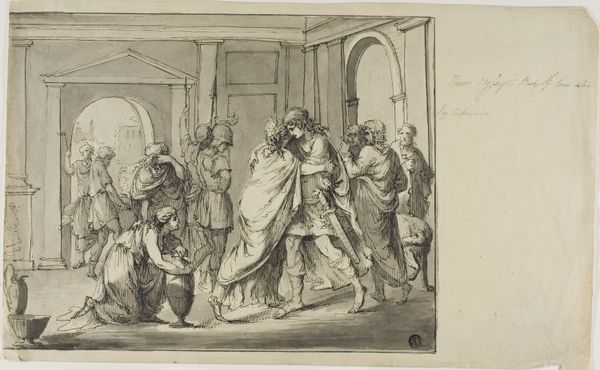
print, etching, engraving
#
narrative-art
# print
#
etching
#
figuration
#
history-painting
#
engraving
Dimensions: plate: 20.1 × 27.2 cm (7 15/16 × 10 11/16 in.) sheet: 22.1 × 29.8 cm (8 11/16 × 11 3/4 in.)
Copyright: National Gallery of Art: CC0 1.0
Curator: "The Tribute Money," created around 1817 by Sir George Hayter. It’s rendered as an etching and engraving. My immediate impression is how it evokes this intense, quiet scrutiny. It has a gravity beyond the scale. Editor: And that's interesting given what the image signifies. This scene freezes a tense moment. I find the expressions speak to a struggle—the choice of paying taxes to Caesar is, in essence, a submission to authority. What resonates is the internal conflict and debate embodied by each person in the etching. Curator: Indeed. Consider the hands—look at the elder holding the coin. Every crease and line seem deliberately rendered, creating weight to a gesture both humble and loaded. It seems like a reference to much earlier prints. There’s a weight that almost feels reminiscent of, say, Dürer, but reinterpreted. Editor: It's fascinating how you notice the subtle details holding larger meaning. And yet, I also perceive here, and perhaps it's the time period and technique coming together, a stark reflection of societal hierarchies. The image makes visible these tensions between spiritual commitment, secular duty, and personal conscience. The artist subtly calls out these figures. Curator: I would agree, particularly as it deals with how external authority is imposed and subsequently affects interior and psychological states. It’s as if Hayter captured not just a narrative moment, but also the longer lineage of internal grappling with ethical choice, both personal and political. The weight and meaning of history bear down on everyone, including those now beholding this work. Editor: What a poignant point, especially in considering the contemporary relevance. Looking at it, aren't we always facing versions of that "Caesar," negotiating faith, resistance, and compliance daily? Art serves as a mirror. Curator: Very well put. This image shows how something made in 1817 can echo across time. I'm moved by how seemingly static images can spur thought, dialogue and re-evaluation of not just the past, but the continuous present as well. Editor: Ultimately, then, art like this becomes part of our social conversation. It pushes the status quo even through silent witnessing across centuries, pushing conversations around identity, power, and belief forward. It remains an active participant in our evolution.
Comments
No comments
Be the first to comment and join the conversation on the ultimate creative platform.
